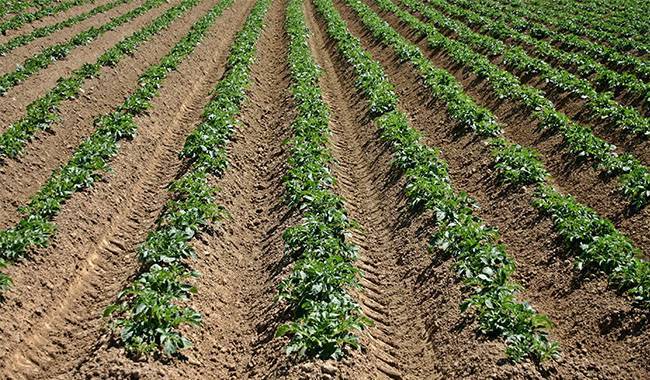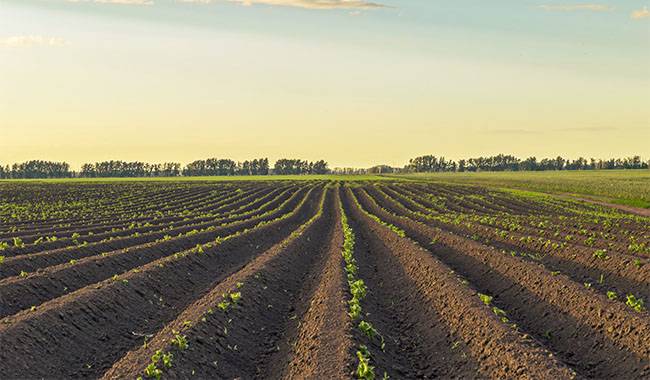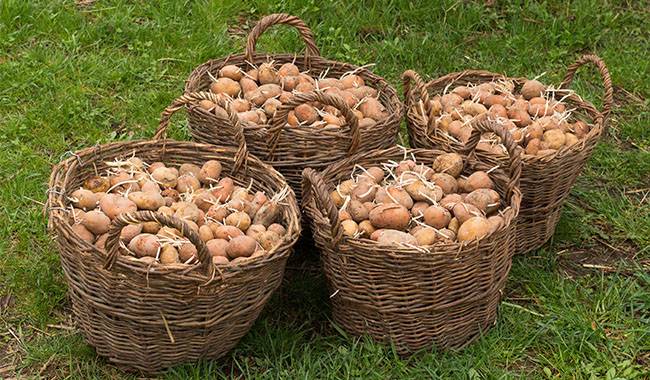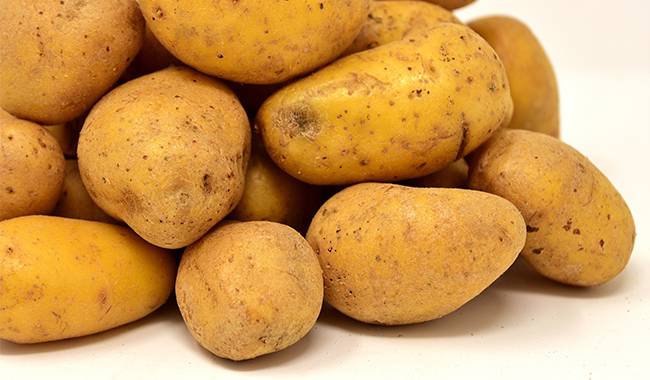
Today, the potato is second only to cereals as the world’s major food crop. There are more than a thousand varieties of potato suitable for cultivation in different climatic conditions and on different continents. However, for year-round use and propagation as food, the crop requires long-term storage.
Properly prepared potatoes can be successfully stored for up to 8-10 months in specially equipped storage facilities. In this article, we will show you how to harvest properly and how to store potatoes.
HARVEST TIME FOR WINTER STORAGE POTATOES
When potatoes are grown on farms, vegetable growers often cover young potatoes with pods in the bush or harvest them early for daily use.
For winter storage, early harvesting does not guarantee that they will keep well.
Only mature tubers can be stored, for which the following measures should be taken.
- Harvesting of potatoes begins when the lower leaves of the stem dry out. Maturity lasts about 3-4 weeks. During this period, the stalks dry up and die, and the tubers collect starch and other substances that give each variety its own unique flavor and aroma.
- One to two weeks before harvest, the dry land is weeded. Potatoes are left in the ground to mature. Potatoes become covered with thick, coarse skin and develop dry eyes.
- Potatoes can be dug up in dry, sunny weather to allow time for the tubers to dry in the sun and be kept in a cool place for a while after processing.
- In warmer areas, potatoes will be fully mature in the ground; in colder areas, it is more practical to time the digging according to weather conditions.
- Early potato varieties are harvested in July and early August; medium-sized varieties are harvested between mid-August and the end of the month. Late season – in the third decade of August to the first half of September. Leaving potatoes in the ground longer is not realistic: autumn rains may start to fall. The tubers will accumulate a lot of water, reducing their storability over the winter. But if you let the drought last long enough, they will lose moisture and become too soft.
When you buy potatoes for storage, you should buy only one variety. The best varieties for storage are those with yellow flesh. Potatoes of different origins (e.g., different appearance, different flesh color) can be stored in different containers. Before storing potatoes, they should be air-dried for 1-3 weeks and kept out of the sun not to turn green. Thereafter, store them under the same conditions as home-grown potatoes.
PREPARING POTATOES FOR STORAGE
To successfully preserve home-grown potatoes for your family until the next season, you need to prepare these tubers for storage after harvest.
- Spread the dug-up potatoes out in the sun for a few hours to allow them to dry. UV light will destroy some fungal and bacterial infections.
- After shaking off the soil, the tubers are carefully sorted into different parts: larger tubers for eating, medium-sized tubers for propagation, and smaller tubers for feeding poultry and livestock (if any). Diseased potatoes were removed and destroyed, especially those damaged by phytophthora, rots and other fungal and bacterial diseases.
- Sorted potatoes are sprayed with antifungal biological preparations (phytophthora, bacteriocins, etc.), dried in a cool place, packed in containers prepared for storage, and placed in storage.
- To keep more healthy potatoes, it is better to grow and store more medium- and late-maturing varieties. But they don’t need to be mixed because each variety has different storage requirements.
Early varieties cannot be stored for very long; by November, the tubers begin to wrinkle and lose their flavor, making them unfit for consumption. Therefore, early varieties are stored only for propagation.
STORAGE CONDITIONS FOR POTATOES
To maintain healthy potatoes in larger quantities, the following requirements must be met.
Maintain air temperatures in the range of 35-39°F (2-4°C) in any type of storage. At this temperature, potatoes are dormant – they do not form root systems and do not freeze. Lower temperatures promote the conversion of starch to sugar, while higher temperatures trigger the root formation process.
The storage room must have a thermometer to measure the temperature and the ability to act when the temperature changes if the temperature rises rapidly. Open vents to provide ventilation.
The humidity in the room where potatoes are stored should not exceed 70-85%. To find out, install a hygrometer in the room. Higher humidity levels can promote the appearance of mold and mildew. Dry the air in the room or use ventilation equipment.
The bottom of potato storage should be covered with sand, preferably quartz sand, pebbles, gravel, other materials that absorb moisture. It is not allowed to use cement in the bottom of cellars and other types of storage to cover it with linoleum, smooth slate, flooring, and other similar materials because this can accumulate moisture and lead to the growth of molds and other negative processes.
Daylight and prolonged artificial lighting are not allowed in storage rooms. Light promotes the production of toxic lycopene in potato tubers. An external cause of this toxic lycopene production is the greening or dark green color of the tubers. These potatoes are not suitable for human consumption.
To protect potatoes from winter pests and diseases, you need to prepare the room carefully and arrange the tubers in a suitable container accordingly.
- Isolate the storage room from pests: mice, rats, slugs.
- Disinfect the room against fungal and bacterial infections (burn sulfur bombs or place sulfur blocks on metal trays or use other methods to disinfect the room).
TYPES OF STORAGE
If the area allows, it is obligatory to build cellars, basements, vaults, vegetable pits, and other special storage facilities for storing products in winter. They are equipped with special shelves on the floor, set on pallets that allow the free exchange of air on all sides of the container and products.
What is even more difficult to ensure is that for those gardeners who have bungalows, the vegetables stored in winter are kept away from the storage facilities. One has to adapt the wooden hut or balcony to facilitate storage. In this case, storing in bags, nets, boxes, or even covering with old fur coats is inappropriate. It is more practical to make wooden holding boxes to store potatoes and other vegetables. All homemade storage made of wooden materials should be painted to protect the exterior from moisture.
The easiest way to store on a balcony, log cabin, or porch is to make a homemade box/stand with double walls, a bottom, and a lid. Hot cabinets home or portable balcony cellars are more aesthetically pleasing and practical. They can be bought or made by your own hands.
All types of such temporary/permanent storage have double walls, bottoms, and lids. The space between the walls in the warehouse 1.5-2.4inch (4-6 cm) is filled with any insulation material (dry sawdust, small dry shavings, foam, etc.). Craftsmen can equip such barns (especially uninsulated ones) with electric heating units with thermostats.
If the family budget allows, you can buy a soft, portable home insulation box, or also called a balcony cellar. It consists of a double bag in the form of tent fabric. Between the walls of the bag, there is an insulating layer (usually synthetic – it is a non-woven fabric, consisting entirely of synthetic fibers) and an electric thermostat.
The balcony cellar keeps the products in ambient temperatures down to -40°F (-40°C). In spring, the Bodega is assembled, washed/washed, and stored in a secluded, dry place until the next winter.
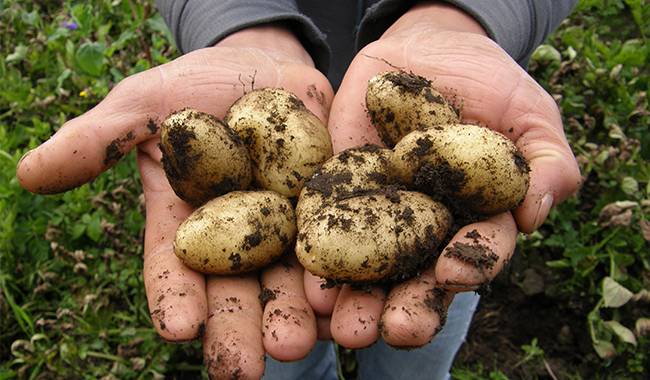
TYPES OF POTATO STORAGE CONTAINERS
Depending on the potato storage unit, prepare storage containers for storing potatoes.
The most common type is a wooden box. Loose wooden boards and an open-top provide good air exchange. Boxes containing 22-26 Lb (10-12 kg) of potatoes are easy to handle and allow retrieval of the product if necessary.
They are placed on shelves or racks so that they are at least 10-12inch (25-30 cm) from the storage wall, about 6-8inch (15-20 cm) from the floor to the bottom of the crate/container, and at least 20-24inch (50-60 cm) from the top to the ceiling. There is a 4-6inch (10-15 cm) gap between the crates.
It is easy to monitor potato storage in mesh bags, which, like crates, can be used to determine security quickly and sort out frozen, rotten, damaged, or diseased tubers if necessary.
If rodents infest warehouses during the winter, it is best to store produce in double-wire containers with fine mesh, the bottom of which is above ground level. With a single layer of netting, rodents can reach and nibble on the sides of potatoes that fit snugly into the netting. Some growers store potatoes in metal drums with small holes for air exchange, covered with metal mesh.
BASIC RULES FOR STORING POTATOES
Store potatoes in a ventilated environment as a matter of urgency.
- For home storage, it is best to store potatoes in small containers 22-26-33 Lb (10-12-15 kg) on pallets or shelves covered with a frost-proof cover.
- Before putting potatoes into storage, it is necessary to thoroughly screen them and separate diseased, damaged, and greenish tubers from healthy ones.
- It is practical to put a layer of beet on top of stored potatoes. By absorbing moisture from “breathing” potatoes, beets protect the latter from excessive moisture that can lead to fungal infections.
- Placing several apples in a box with stored potatoes will slow down their sprouting.
- When storing bulk potatoes, the height of the mound should not exceed 5 feet (1.5 meters). The top of the potatoes should be covered with a sack or an old blanket or tartan. This method will reduce the penetration of frost in any weather conditions and keep the possibility of free air exchange. If the floor is cold, you can insulate it with felt and cover the side of the potatoes with desiccant.
- For all types of winter storage, you should check tubers 2-3 times to remove diseased and green tubers.
- Early potato varieties are usually used for direct consumption. They should not be stored.
For early potatoes that are still available after November, they are usually stored as planting material. They are not used as food. This is because the tubers dry out, lose moisture and become unpalatable.
Potatoes for planting are stored under the same conditions as edible potatoes.
With proper storage, they retain their flavor qualities almost until a new harvest of early potato varieties.
Among the early and early maturing potato varieties: these are the recommended varieties: Elba, Katahdin, Red Chieftain, Yukon Gold, Burbank Russet, German Butterball, Yukon Gem, Rose Finn Apple Fingerling Most varieties can easily be kept for 6 months or more under proper storage conditions, including Russian Banana Fingerling, Red Pontiac, All Blue and Kennebec. However, as a rule, early varieties are stored as planting material only.
More related information about growing potato plants





